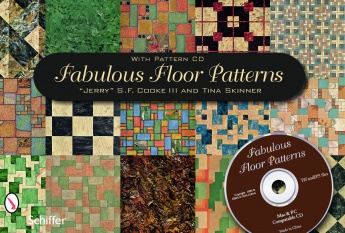Product Reliability, Quality Among Key Attributes for Retailers Selling Laminate Flooring

Shown is Formica Flooring’s Venetia collection in Smoky Topaz. The Venetia collection features natural stone designs laid out in modular tile patterns, in earthy, organic color tones. Photo courtesy Formica Flooring.
It is easy to recognize the two leading attributes (besides price) driving a particular brand/manufacturer of laminate flooring. Product reliability and quality (71%) has consistently been the leading attribute year after year, but product design and styling (62%) has increased by 35% and distributor services/support (41%) has increased by 28% compared to 2010.

The retail salesperson is key in selling to customers a specific laminate flooring brand; an average of 45% of customers change to a different flooring type than initially requested and an average of 45% of customers purchase a different brand following the recommendation by the salesperson.
The ever-increasing number of big-box stores continues to affect the laminate flooring business, along with eroding profit margins and increasing competition from flooring channels.
Seven of 10 respondents indicate that consumers view laminate flooring products as offering high durability, followed by more than one-third indicating high selection/styling. Less than one-third indicate laminate flooring as offering high overall appeal, quality and price. (Chart 2)
Laminate flooring is seen as a profitable alternative by an increasing amount of retailers and their customers. Sixty-eight percent of the study’s respondents see laminate floors as a profitable alternative to wood flooring along with 56% versus vinyl flooring. Laminate flooring is significantly more likely to be perceived as an alternative to ceramic (36%), which has more than doubled compared to last year, while the consideration for being an alternative to stone (24%) has tripled from the 2010 study.

Perhaps laminate segment sales are dropping due to retailers reducing the frequency of recommending these products to their customers. More than one-third of respondents seldom or never recommend laminate floors to their customers, an increase of 29% compared to 2010, while 64% are recommending often or always, a decrease of 12%.
The average price per square foot of laminate flooring declined significantly in 2011 ($3.45) compared to 2010 ($4.38) after marginal increases between 2007 and 2010.
Residential segment sales expectations for laminate flooring are expected to drop compared to 2010 with 33% of respondents anticipating lower sales, 39% projecting sales to be the same and 28% expecting an increase. Fifty-one percent of respondents see commercial laminate flooring sales remaining the same as in 2010, 36% projecting lower sales and 13% expecting increased commercial sales.
Dealers/contractors reduced the visibility of laminate flooring products within their stores to an average of 13%, a decrease of 19% compared to 2010. Glueless installation continues to account for 9 of 10 jobs (91%).
Mannington (22%) is most reported as the top selling brand after a significant increase from 2010, beating out both Quick-Step (14%) and Shaw (13%), who were ranked at first and second in 2010.
The frequency of consumer complaints has largely remained the same for laminate products compared to other flooring categories.
The top concerns from consumers are water/moisture resistance/humidity and temperature changes, 32%; noise/sound, 23%; scratching/marking, 13%; maintenance/care/cleaning, 13%; buckling, warping, swelling, cupping, uneven, 12%; joint opening/gapping/seams showing/peaking/movement, 10%; and performance/durability/longevity, 10% Additionally, concerns regarding water/moisture resistance/humidity/temperature changes and buckling/warping/swelling/cupping/uneven have increased significantly from 2010.
Looking for a reprint of this article?
From high-res PDFs to custom plaques, order your copy today!






